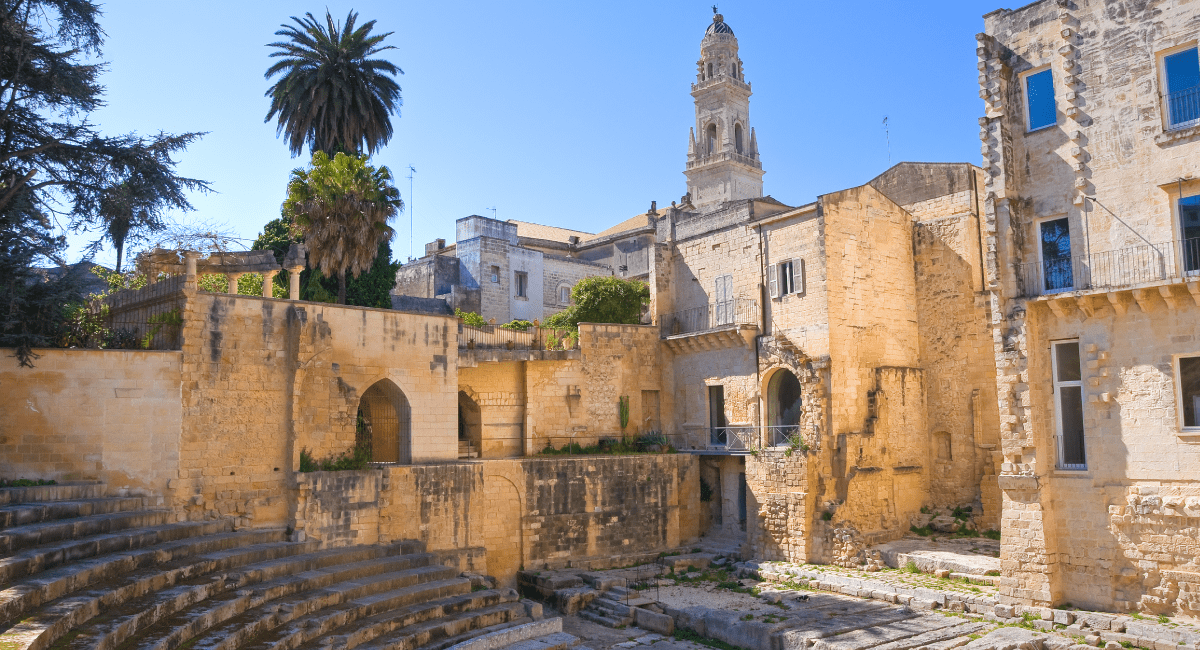
The historic center of Lecce is a veritable open-air museum.
Follow our itinerary and explore the architectural masterpieces that made it the “Lady of Baroque” of the South.
Piazza Sant’Oronzo and the Cathedral of Lecce
Piazza Sant’Oronzo, with its iconic column, is named after the patron saint and is the beating heart of Lecce. Surrounded by clubs and meeting places, Piazza Sant’Oronzo is a landmark of the city. It is right here that the Cathedral of Maria Santissima Assunta, known as the Cathedral of Lecce, stands. Dating back to the 17th century, it is famous for its majestic 70-meter bell tower that offers a splendid view of the Adriatic Sea.
Castello Carlo V
Erected by Charles V between the 15th and 16th centuries to protect the city from Turkish invasions, Charles V Castle now houses the Papier Mâché Museum and the city’s major cultural events.
Santa croce and Palazzo Celestini
The Basilica of Santa Croce represents the finest example of Lecce Baroque, built between the 16th and 17th centuries. The facade combines Renaissance and Baroque elements, a striking central rose window flanked by statues of St. Benedict and St. Celestine. Adjacent to the Basilica is the former Celestine convent famous for its large arched cloister.
Porta Napoli
Porta Napoli is one of the four gates that in ancient times provided access to the city, erected in 1548 in honor of Charles V, it is so called because it led to the capital of the Kingdom of the Two Sicilies. The other gates that can be seen are Porta Rudiae and Porta San Biagio.
The Roman amphitheater and theater
The Lecce amphitheater is a monumental structure that could hold up to 25,000 people. Restored to light in the early 1900s, the visible part is only a third of the total that is still buried under Piazza Sant’Oronzo. A few hundred meters from the amphitheater, you can also admire the remains of the Roman theater.
Want to see the wonders of Leccese Baroque?
Alèa Rooms is the ideal place to stay.




